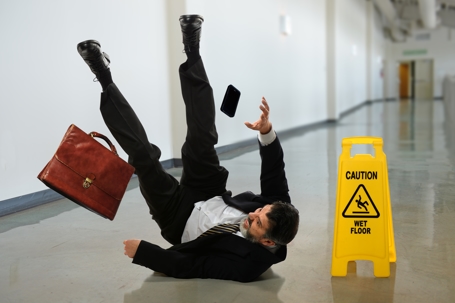Accidents that result in injuries happen all of the time--with many of them being our own fault. However, accidents can also be caused by another person or even something else on the property.
When it comes to slip and fall accidents, however, it is sometimes difficult to prove who is at fault. In order to recover monetary damages, you must prove a negligent party—often the property owner—caused the accident and your injuries.
To succesfully sue a property owner for injuries caused by a slip and fall accident, a victim must often prove one of the following circumstances:
- The defendant should have noticed the a hazardous condition and then fixed or removed it, but failed to do so. It is imperative to determine if a reasonable individual would have recognized dangerous condition and whether he/she had plenty of time to resolve the issue prior to the accident taking place.
- The defendant is responsible for causing the hazardous condition which resulted in the accident.
As mentioned above, in order to show that a property owner is liable for your injuries, you need to demonstrate—at some point—the “reasonableness “of the property owner’s actions. In other words, a property owner failed to address the issue as any reasonable individual would in a similar situation.
The following are some questions that you or your lawyer will want to discuss prior to starting a case:
- How long had the defect or hazard been present before the accident?
- What kinds of daily cleaning activities does the property owner (or their employee) perform? If the property owner claims that he or she oversees the property daily, what kind of proof can he or she show to support this claim?
- Is there a justifable reason whey the danger was created?
- Could preventative measures make the hazard less dangerous?
- Did the accident involve poor lighting?
However, the property owner may argue that the victim is partly or entirely at fault for the underlying accident and injuries. This legal argument is commonly known as “comparative fault.”
Texas is one of 21 states which adhere to a modified comparative fault law—commonly known as the “51 percent bar rule.” This means that an injured party cannot recover any damages if it is 51% or more at fault. So if the property owner can prove that the victim likely caused the accident through his or her own carelessness or clumsiness, winning a personal injury claim may not be a possible outcome.
If you have suffered an injury in a slip and fall accident caused by a negligent party in Fort Worth, TX, request a free case evaluation with the Law Office of James M. Stanley today.

